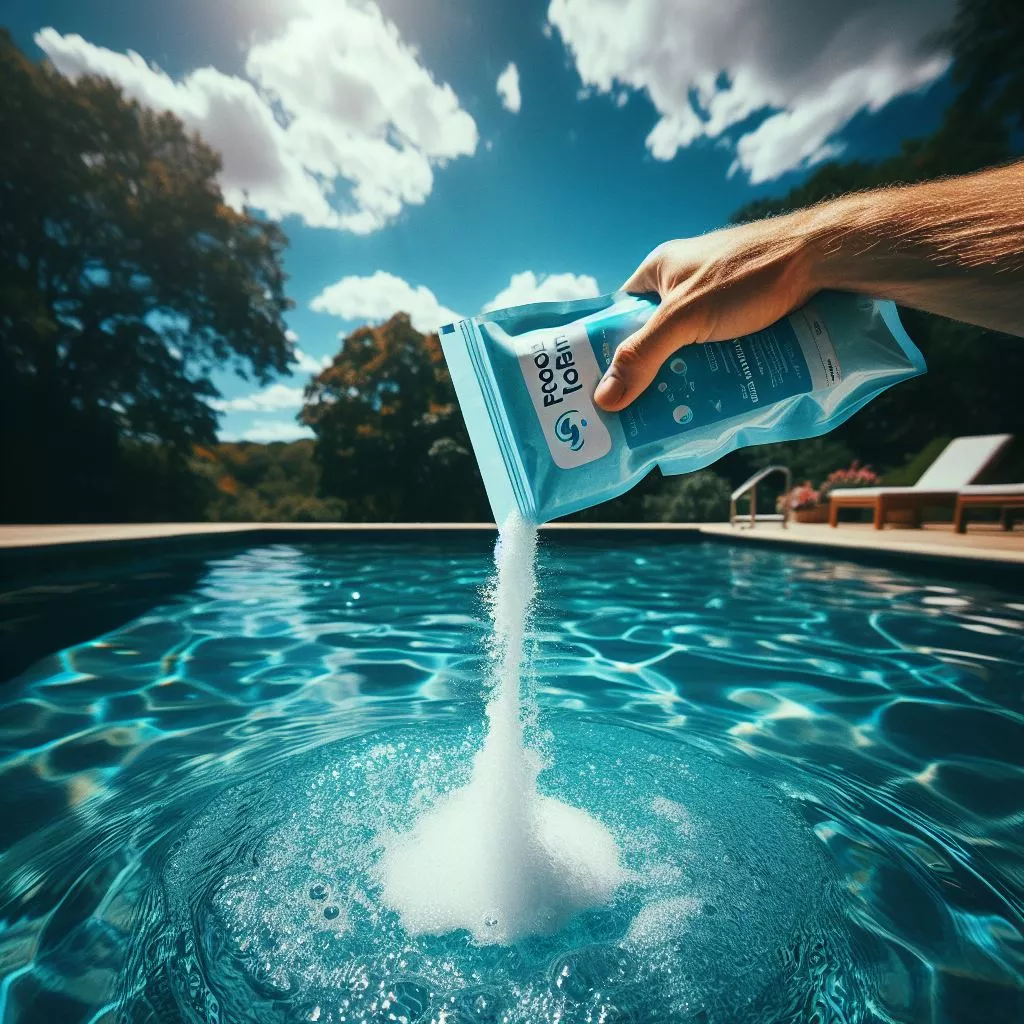Maintaining a clean and pristine swimming pool requires diligent attention to various factors, including the removal of debris and impurities that can accumulate in the water. Pool flocculants, also known as coagulants or clarifiers, are essential tools in this process. They help gather suspended particles, such as dirt, oils, and organic matter, into larger clumps that can be easily removed through filtration. This article explores the importance of pool flocculants in eliminating pool debris and impurities, their mechanisms of action, and best practices for their use.

The Importance of Pool Flocculants
Enhanced Water Clarity
Pool flocculants play a crucial role in improving water clarity by effectively removing fine particles and impurities that can cause cloudiness or turbidity.
Improved Filtration Efficiency
By clumping together suspended particles, flocculants facilitate their removal through the pool filtration system, enhancing filtration efficiency and reducing the load on the filter.
Preventing Surface Deposits
Flocculants help prevent the formation of unsightly surface deposits by agglomerating particles that would otherwise settle on pool surfaces, walls, and floors.
Enhanced Water Quality:
Clear, debris-free water not only enhances the aesthetic appeal of the pool but also contributes to a safer and more enjoyable swimming experience for users.
Mechanism of Action
Pool flocculants work through a process called coagulation and flocculation:
Coagulation: Flocculants contain positively charged molecules that attract and neutralize negatively charged particles suspended in the water, such as dirt, oils, and other impurities. This neutralization process destabilizes the particles, causing them to clump together.
Flocculation: Once the particles are destabilized, they begin to aggregate and form larger clumps or flocs. These flocs are heavier than water and settle to the bottom of the pool or become large enough to be captured by the pool filtration system.
Removal: The settled particles or flocs can be easily removed from the pool by vacuuming the pool floor or by backwashing the pool filter, depending on the type of filtration system used.
Best Practices for Using Pool Flocculants
To maximize the effectiveness of pool flocculants, follow these best practices:
Proper Dosage
Follow the manufacturer’s instructions regarding the appropriate dosage of flocculant based on the size and volume of the pool. Using too much flocculant can lead to overflocculation and difficulty in filtration, while using too little may result in inadequate particle removal.
Dilution
Dissolve the flocculant in a bucket of water before adding it to the pool. This ensures even distribution of the flocculant and prevents localized overflocculation.
Circulation
Maintain proper water circulation in the pool during the flocculation process to facilitate the mixing of the flocculant with the pool water and the distribution of flocs throughout the water column.
Patience
Allow sufficient time for the flocculant to work effectively. Depending on the severity of the water clarity issues, it may take several hours or overnight for the particles to form flocs and settle to the bottom of the pool.
Vacuuming or Filtration
Once the particles have settled, use a pool vacuum or backwash the filter to remove the accumulated debris from the pool.
Conclusion
Pool flocculants play a vital role in maintaining clean and clear swimming pool water by effectively removing debris and impurities through coagulation and flocculation processes. By following best practices for the use of pool flocculants, pool owners can ensure enhanced water clarity, improved filtration efficiency, and a safer and more enjoyable swimming experience for users. Regular use of pool flocculants as part of a comprehensive pool maintenance routine is essential for preserving water quality and prolonging the life of pool equipment.
